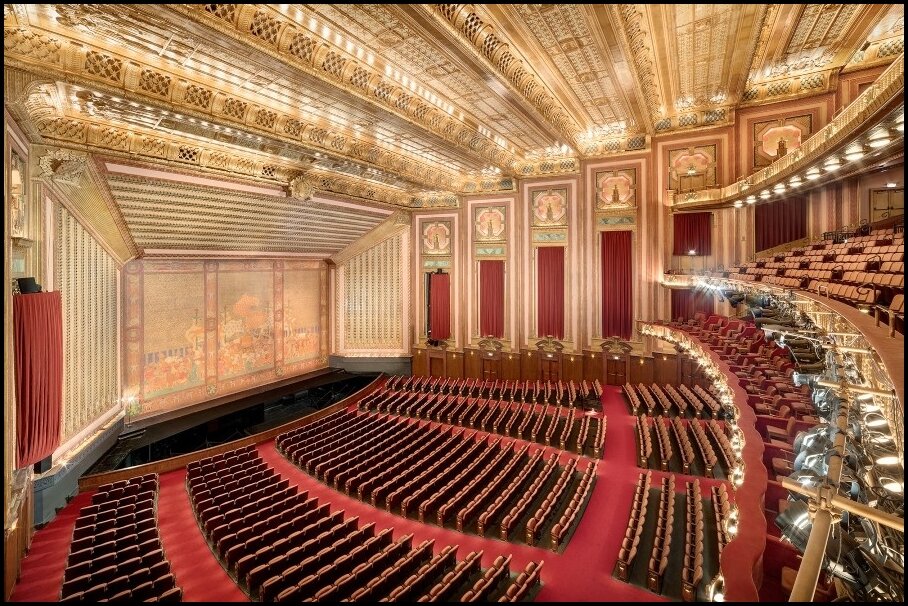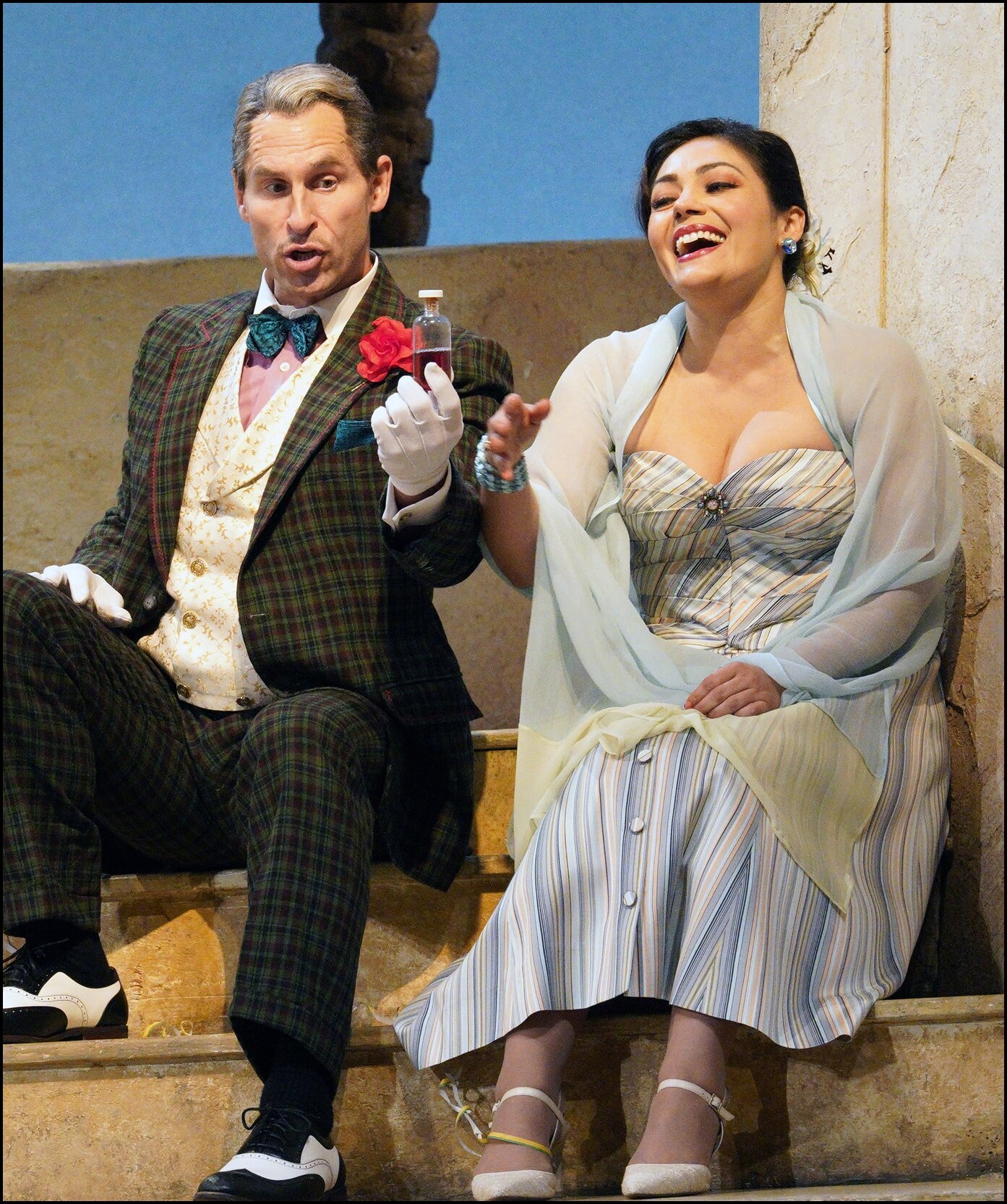My friend Betsy and I took advantage of the Chicago Lyric Opera’s special promotion to lure fans back to the theater—three performances, good-enough seats at a great price. Our first opera was Donizetti’s bel canto masterpiece The Elixir of Love. Perhaps my favorite opera; from start to finish the music is joyous, with lots of opportunities for performers to display their vocal talents and humorous acting chops.
Adina and Dulcamara with the elixir
Bel canto (beautiful singing) reached its apotheosis in early 19th century Italy in the operas of Bellini, Donizetti, and Rossini. But it began in the 18th-century works of Handel and then Mozart. For these two composers, it was used to vary to the repetition of lyrics that often make their operas lugubrious. And, though they wrote in Italian, these are German composers. The Italians seized the art form and ran with it. More technical information and a short video on bel canto opera are at the end of this post.
Free spirited Adina
Adina and Nemorino in love forever
Like most operas, the plot is little more than an excuse to write beautiful music. The fake “elixir” is Bordeaux wine; the heroine Adina, herself a successful businesswoman who owns the local hotel and cafe, accepts the marriage proposal of a handsome visiting army captain Belcore. Nemorino, a waiter at the cafe pines with love for Adina and joins the army so he can use the enlistment bonus to purchase the love potion sold by charlatan, Dulcamara. Three major male roles: baritone Belcore, sung by Joshua Hopkins, base-baritone Dulcamara, sung by Kyle Ketelsen, and tenor Nemorino, sung by Charles Castronovo. Add one amazing soprano; Adina, sung by Ailyn Pérez. These four, with conductor Enrique Mazzola and the Lyric Opera Chorus, wove magical music. It was a delightful afternoon.
For more information on how the conductor of the Lyric, Enrique Mazzola, and the singers work together in a bel canto performance, here’s Chris Jones’s review from the Chicago Tribune.
Short video preview of the Washington National Opera production of The Elixir of Love.
Courtesy of Wikipedia, Italian bel canto operas are characterized by:
prosodic singing - the musical phrase matches the grammatic phrase
matching register and tonal quality of the voice to the emotional content of the words
a highly articulated manner of phrasing based on the insertion of grammatical and rhetorical pauses
a delivery varied by several types of legato and staccato (this is one of my favorite aspects of The Elixer of Love. Throughout, there are sequences where the vocal lead is singing melodically and the second voice is simultaneously staccato, as though whispering into the ear. Think Eminem and Rhianna.
a liberal application of more than one type of portamento (increasing or decreasing the pitch from one syllable to the next without releasing - and using speed and vibrato)
messa di voce as the principal source of expression (increasing the volume of the note without changing it in any other way)
frequent alteration of tempo through rhythmic rubato - the quickening and slowing of the tempo, usually at the discretion of the singer or the conductor
the introduction of a wide variety of graces and divisions into both arias and recitatives (This is where the performers add their interpretations to the scored music. Sometimes the composer writes the first note of the phrase and the endnote. The conductor and the singer agree on path between.)
gesture as a powerful tool for enhancing the effect of the vocal delivery
vibrato primarily reserved for heightening the expression of certain words and for gracing longer notes.




